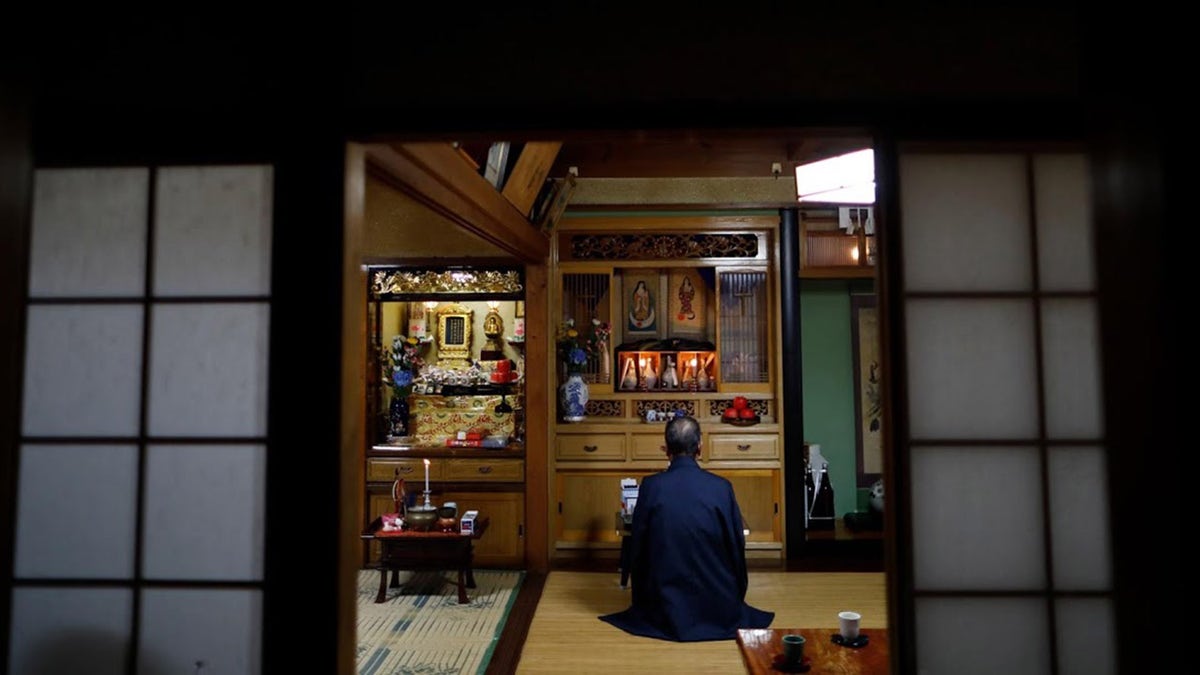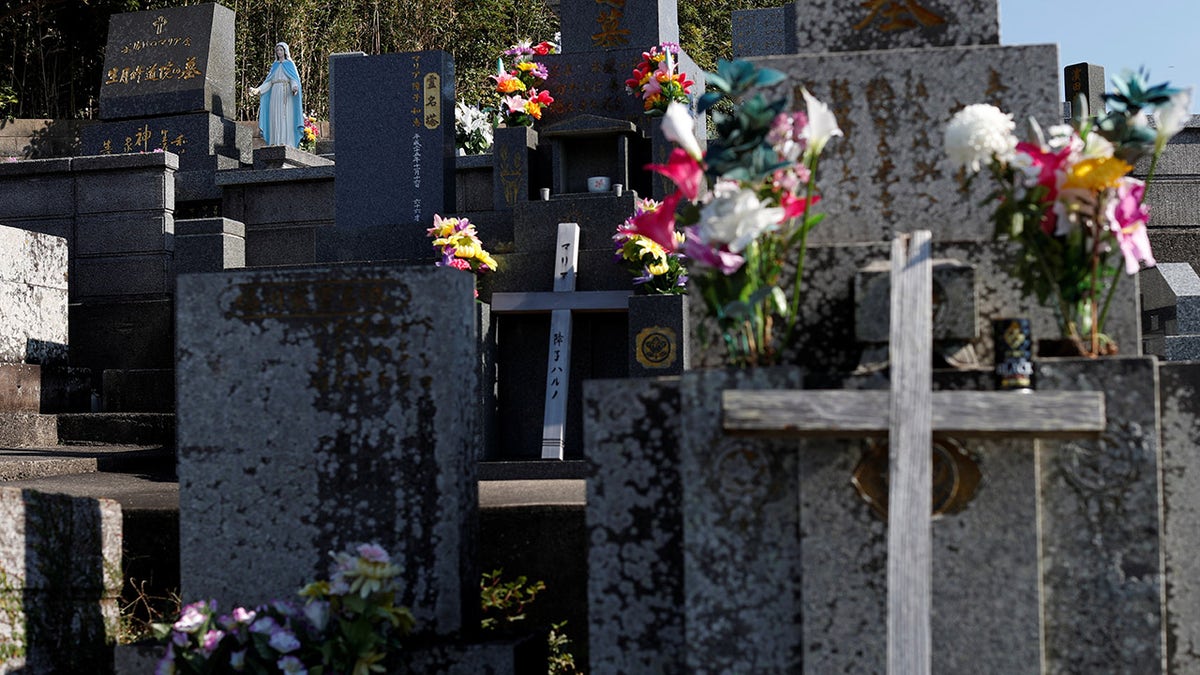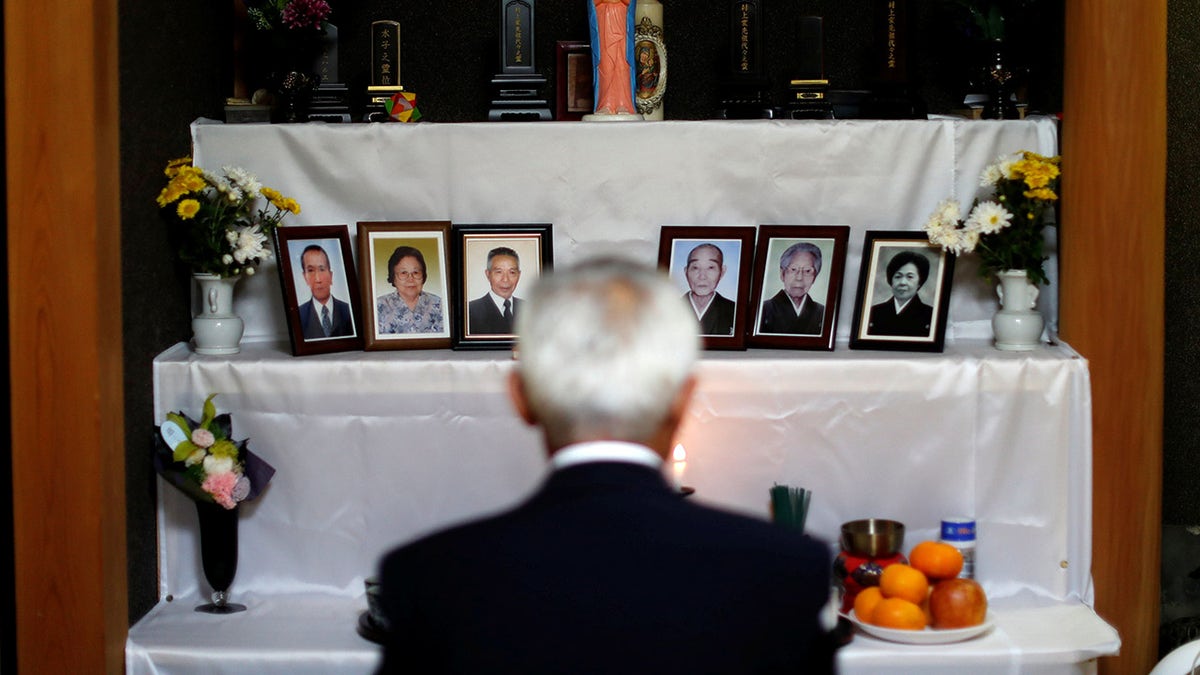Tucker Carlson visits a temple in Kyoto, Japan
'Tucker Carlson Tonight' heads to Japan for the G20 summit.
Japan's "Hidden Christian" population, members of the Japanese Catholic Church who had to go into hiding during intense religious persecution, will be getting a big boost this weekend from Pope Francis.
After his trip to Thailand, Francis will touch down in Japan, promoting the Asian nation's small Catholic communities, interfaith dialogues, and defending life and the environment, according to the Vatican.
POPE FRANCIS TO REUNITE WITH MISSIONARY COUSIN DURING TRIP TO THAILAND: 'I CALL HIM JORGE'
Kakure Kirishitan, as it's called in Japanese, is a term for the members from the Edo period that went underground after the Shimabara Rebellion in the 1630s, which now have 12 Hidden Christian-related locations designated as UNESCO World Heritage sites, Reuters reported.

Kawasaki's unique faith blends Buddhist, Christian and Shinto practices, and its ritual chants combine Latin, Portuguese and Japanese.
The dwindling population that has preserved their faith in secret for centuries has gained popularity ahead of Francis's Nov. 23-26 visit to Japan, when he is expected to address them at a martyrs' monument on Nishizaka Hill in Nagasaki, southwest Japan, where 26 Christians were executed in 1597.
"I think there is a high likelihood that he will send a message about the Hidden Christians," Kagefumi Ueno, a former Japanese envoy to the Vatican, told reporters. "The pope has said the fact that in Japan there were Christian people who maintained their beliefs for two and a half centuries under great suppression holds a big lesson for the present."
CHRISTIANS OFFER HOPE OF JESUS IN JAPAN AS YOUTH SUICIDE RATE INCREASES
Only around 1 percent of Japan's population is Christian, and depending on the region, it is practiced in different ways.

A statue of Virgin Mary is seen on a gravestone of descendants of 'Hidden Christians' who preserved their faith in secret during centuries of persecution, at a cemetery on Ikitsuki Island, Nagasaki Prefecture, Japan, November 6, 2019. REUTERS/Issei Kato
On Ikitsuki Island in southwest Japan, chants are traditionally spoken and sung, but in Sotome, believers prayed silently for fear of being exposed.
POPE FRANCIS DENOUNCES 'INHUMAN, UN-CHRISTIAN' REBIRTH OF ANTI-SEMITISM: 'JEWS ARE OUR BROTHERS'
When Japan's ban on Christianity was lifted in 1873, some of the Hidden Christians opted to join the Catholic Church while others continued to practice secretly while publicly appearing to practice other faiths by staying in Buddhist temples or Shinto shrines and mixing some faith practices.

Shigenori Murakami, 69, the seventh-generation head of a group of 'Hidden Christians' chants 'orasho' in front of an altar adorned with a statue of the Virgin Mary and photos of deceased relatives at his home in Nagasaki, southern Japan, November 3, 2019. REUTERS/Issei Kato SEARCH
“They didn’t want to destroy the faith they had preserved all along despite suppression,” said Shigenori Murakami, the seventh-generation head of a group of Hidden Christians in Nagasaki City’s Sotome district, the setting for Martin Scorcese’s 2016 movie “Silence” about persecuted Christians.
“In my grandfather’s day, there were several hundred,” Murakami said. “But young people are not interested. They are turning away from religion generally.”
CLICK HERE TO GET THE FOX NEWS APP
Still, many Hidden Christians are determined to keep the faith alive through the generations.
"I have not picked a successor yet, but I have confidence I can keep going myself and I will surely pass this on," Murakami said. "I cannot let my generation be the ones who destroy what my ancestors protected with their lives."

